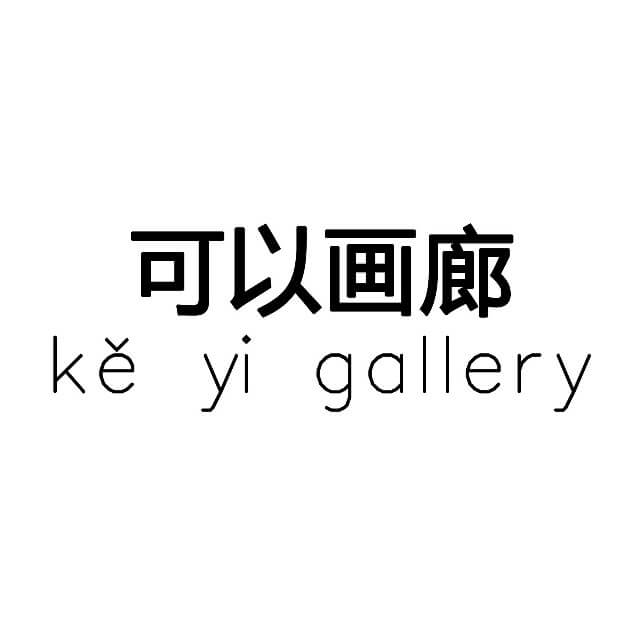We are living in an exceptional visual paradox: screens seem to have brought people closer at our fingertips, yet simultaneously pushed them further into the pixelated void. Hito Steyerl incisively argues in The Wretched of the Screen that digital images are not neutral carriers but physical entities—they consume energy, occupy server space, and shape our visual habits and emotional patterns through their circulation. When Zygmunt Bauman described the fragility and transience of contemporary interpersonal relationships in Liquid Modernity, he might not have foreseen how fluidity would configure in the digital age.
Luo Ran's recent work is a profound meditation on this very condition. As individual existence is suspended within digital flows, inner worlds gradually hollow out, and human connections grow increasingly distant. How can we reconstruct intimacy? And as our external and internal selves perpetually transform, which experiences would ultimately endure? Luo Ran’s work tries to build a bridge between screen experiences, personal histories, and the distance traversed to reach the canvas, mapping these fluid emotions into perceptible cartography.
Technological evolution has undeniably introduced new modes of seeing and vision as a critical channel in our perception, constantly shaping our human experience and cognitive frameworks. Luo Ran became curious about the 3D modeling software Blender, which he used frequently in his early creative stages, offering the artist unexpectedly diverse experiences of navigating multidimensional spaces. From there, Luo adopted the hand emoji—this mediatized vessel of human emotion—as a primary subject, using painting to document his discoveries onto the two-dimensional surface. Given that Erving Goffman has identified facial expressions and bodily gestures as key components of the "personal front" in online interaction, the system of immediate physical cues reconfigures, with spontaneous physical reactions receding to the background and being replaced by carefully curated emoticons—a new, highly mediatized front.
If Luo Ran's "Adverbs" series captured the modification of "actions" in virtual space, his recent work expands the approach of "reducing dimensions" in his exploration of contemporary human relationships. The term "Manifold," used in the exhibition title, describes this approach and is borrowed from a core mathematical concept in image processing and digital analysis. As a framework for understanding high-dimensional data (such as images), a "manifold" refers to a low-dimensional, "intrinsic" structure or surface embedded within higher-dimensional spaces. In other words, this lower-dimensional structure or surface absorbs and preserves information from which it is inhabited. Luo Ran is engaged in precisely this kind of "dimensional reduction" in his practice – capturing emotions and digital experiences from the fluid and multidimensional space, while absorbing, retaining, and translating them onto the relatively 'lower-dimensional' material surface of painting, thereby mapping them into a perceptible form. In this sense, the artist becomes a visual translator, serving as a channel of worldly experiences.
Looking back at the history of Western art, the representation of the body has always reflected the ethos of respective eras – from the pursuit of perfection and harmony in Ancient Greece and Rome, to the Renaissance's rediscovery of the human form's tangibility through anatomy and perspective, to the gradual deconstruction, abstraction, and internalization of the bodily image of Modernism. Luo Ran’s depiction of the body and its contours appears disarrayed and blurred. These works make it impossible for the viewer to identify the body in its entirety, let alone its boundaries with others. This may be inextricably linked to the "hollowing" state Luo Ran discovered from using Blender’s spatial generation. When the artist sourced materials from open-source software libraries and unfolded human models into two-dimensional texture maps, the boundaries of the model's bodies became deconstructed. The template figures, initially serving a utilitarian purpose as "stand-ins," become reconfigurations where their facial features and senses are redistributed across the picture plane, thus turning into maps of emotional wander without coordinates.
Luo Ran’s process resonates with what Steyerl describes as the fate of images: in digital circulation, images are constantly deconstructed and reassembled, losing their original context and meaning, and become floating signifiers. Luo Ran salvages these "wretched of the screen" from the virtual, assigning them material form. These works are neither purely virtual nor entirely real "handbooks"; instead, they establish a new mode of existence between the two.
Such a painting process is also where the artist fully unleashes his sensory response. Luo Ran translates these digital drafts onto the canvas using various support materials such as velvet, jute, and linen, each primed with a specific technique. The artist's insistence on materiality extends the meticulous depictions of texture and medium seen across different stages of both Eastern and Western painting history, while presenting a resistant position to the void-like nature of digital images. The artist describes his painting process as "Cyber Wander" – a term derived from Zong Bing's concept of "contemplative journeying” in his "Preface to Landscape Painting," transformed into a visual experience for the digital age. Faced with structures on the screen, he embarks on perceptual wanderings across the canvas, where the layering of colors and the rhythm of brushstrokes become traces of each journey.
The largest work in this exhibition, Trojan Horse, powerfully encapsulates Luo Ran's perspective on the human condition in the technological age. The entangled and strained bodies in the painting evoke the colossal serpents coiling around Laocoön in the Hellenistic masterpiece The Laocoön, serving here as a metaphor for the pervasive technological condition of the digital era. Meanwhile, the title "Trojan Horse" bridges the ancient Greek soldiers hidden within the wooden horse of Troy and today's computer Trojan viruses designed to steal data. Luo Ran discerns a continuity in technology as a medium – paradoxically present as a powerful tool and a latent trap.
In this era of image surplus and fragmented realities, rebuilding emotional connections and intimacy is the central concern of this exhibition. How do we search for form within our fluid reality, and construct substance from the void while experiencing intimacy amid separation? Luo Ran's work suggests that true intimacy may depend not on the frequency of connection, but on our capacity to transform fluid emotions into shareable forms. Through his distinctive approach, Luo Ran establishes an ongoing dialogue between the digital and the painterly, the virtual and the real, discipline and emancipation.




